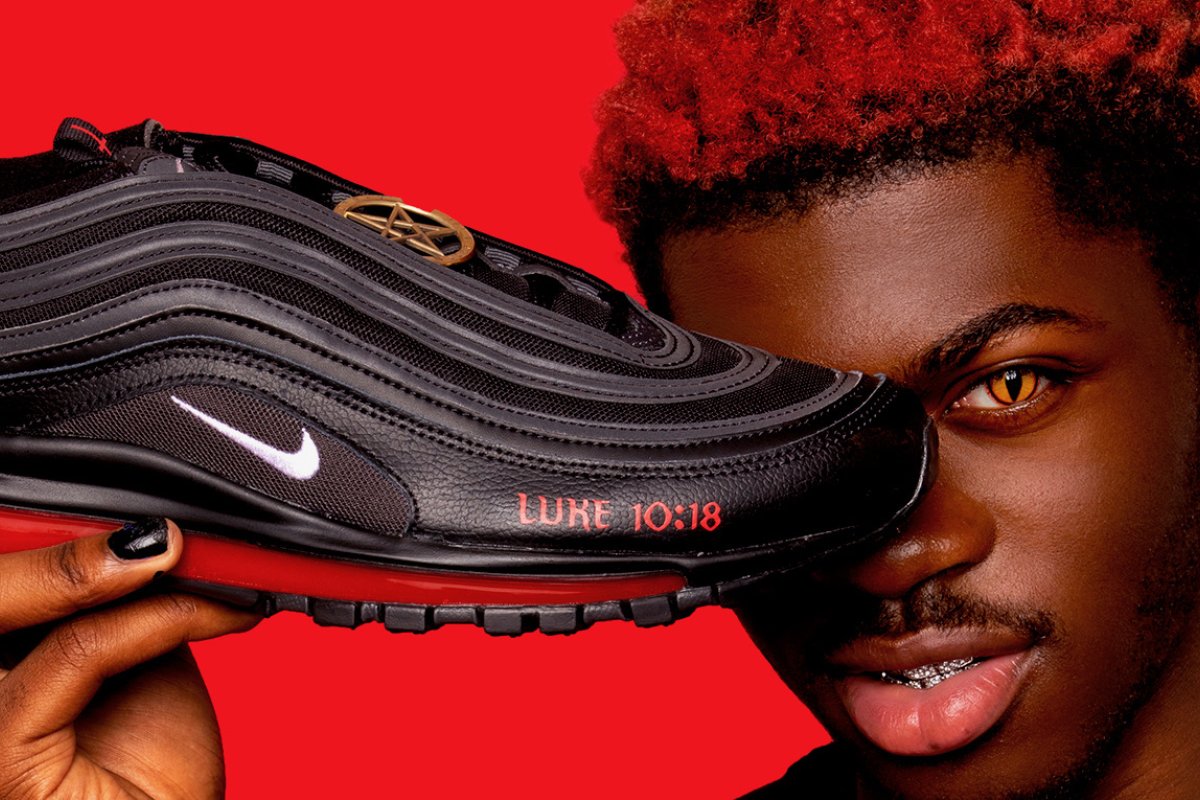
Justice and the Devil in America
A controversy around the symbolisms of evil conceals the hardening of America's heart
§1
Readers: Satan is back! Or so it seems. Who would have thought it? The gruesome slog of the 20th century and its heralds of the death of religion have not stopped the devil's return. The problem is that evil, in the symbolism of the devil, has wily ways to reveal and yet conceal its presence in popular culture. Yet sometimes, it is not the symbolism of evil but its horrid reality—like the murder of George Floyd—that emboldens the struggle for justice. The culture seems caught between symbol and reality. Clearly some interpretation is in order, if for no other reason than for our sanity. Can Sightings help?
It is a canon of Sightings that often religion appears in odd ways, hidden in cultural forms, and that the resources of religion can do intellectual work in helping to articulate those concealed religious forces. Importantly, religious forms—symbols, narratives, rituals, myths—are the means to decode the reality of religion at work in socio-cultural life. We are thinking in between symbol and reality precisely to understand this national moment.
In this light, recall that years ago the philosopher Paul Ricoeur explored the symbolism of evil as a key to human fragility and fault. He ended his book noting that "the symbol gives rise to thought." So, let's start with the symbol of the devil, and work towards the reality that shoots forth in our public life with the hope against hope that we can invigorate the complex struggle for goodness.
Now, oddly, the present appearance of Beelzebub, a character of many names (Lucifer, Al-Shaytan, Mephistopheles) found in many cultures, is in a shoe. Yes, a shoe! But this shoe is not the real evil. The real evil, as we'll see, is how our public life closes its eyes to the unjust and racist forces around us and in us. What do I mean?
If you Google "What are Satan Shoes?" this is the answer: "Satan Shoes are customized versions of the Nike Air Max 97 sneakers, with midsoles purporting to contain a drop of human blood, and printed with ’Luke 10:18,’ a reference to a Biblical verse that alludes to Satan's fall from heaven."
Whether Mephistopheles did or did not fall from Heaven, these lines are manna from Heaven for a Sightings columnist. And this columnist cannot resist reflection on the symbolism of Al-Shoetan!
§2
Some background is in order. The cultural history of the Prince of Darkness, in iconography, art, literature, and theology, is too complex for a single column. Yet whether it is Milton's Lucifer proclaiming that it better to rule in Hell than to serve in Heaven, Satan the prosecutor on the divine council testing God's judgment about Job's faithfulness, a snake in the Garden of Eden, or a demon exorcised in popular movies, the figure of evil morphs with the human imagination. The symbolism of evil, as Ricoeur knew, shifts and develops through time and cultures as people try to grasp the meaning of what seems to exceed meaning.
Recently, the brilliant artist Lil Nas X released the music video "Montero (Call Me by Your Name)" at the same time as the "Satan Shoe," which was produced in collaboration with an art collective, MSCHF. The shoe has an inverted cross and pentagram, and, of course, the drop of blood. In the video, the artist, in demon attire, descends (presumably) to Hell where he does a lap dance on the "real" Devil only, in the end, to kill the Devil and take Satan's horns and wings for himself.
Reactions have been predictable, if completely missing the mark. NIKE sued for infringement of rights and then settled with the artist and MSCHF. The New York Times reported that the blood was "sacrificed" by employees of MSCHF, and the intention was to sell 666 pairs at a stunning $1018.00 a pair. (The shoe was to be followed by "Jesus Shoes" with drops of holy water. No mention was made about how the water would be obtained!) So, lawyers and prosecutors were involved (remember Job) as well as number mythology (666), along with a trove of longstanding visual imagery—wings, razor sharp fingernails, piercing red eyes. Meanwhile, conservative religious leaders poured scorn on the video for corrupting children and blasphemy. Governor Kristi Noem of South Dakota protested in the name of children's eternal souls (but never mind their present needs).
Confusion seems to reign in these reactions. They miss the fact that the video also implicitly criticizes the demonizing of LGBTQ folks in the name of "religion" and that a slave auction shown before the descent into "Hell" reveals the horror of systemic racism in this nation. Upon releasing the song, Lil Nas X penned a letter to his younger self which he posted on twitter: “I know we promised to die with this secret, but this will open doors for many other queer people to simply exist.” Simply to exist. That doesn't sound like the plea of the devil or one aimed at destroying people's souls.
§3
This is a moment in the nation when race, religion, sexuality, the demand for justice, and virulent white nationalism collide and compete in the cities and streets. It is hard not to be dismayed over this event about a symbol in the ongoing culture wars that too easily detracts from the dire reality of our land. After all, despite the justice attained in the verdict about Derek Chauvin, killing goes on and there is hardly equal justice for all.
The reactions to Satan Shoes provoke thought about the hallmarks of this culture: rampant consumerism, unending litigation, horrific economic and racial injustice, and the coopting of religious symbols for political insurrection (think of Q-Anon Shaman and Christian symbols at the January 6 riot at the Capitol) rather than the quest for equality and justice. Over the last months—no, years—mass shootings have piled up bodies even while too often the lives of young Black men are snuffed out by police who ought to protect and serve. Protests and marches rightly follow, but the slaughtering continues. What is left, it appears, is a society devoid of the means to confront real evil or real goodness, a moral mediocracy. Symbols of evil might provoke reaction, but they do not seem to orient action. This is a religious, commercial, and political form of what Hannah Arendt called the "banality of evil."
An oft noted fact is that in some of the greatest literature in the West—Milton, Dante, Blake, Goethe's Faust, James Baldwin, and others—the devil is the most interesting character, concealing the importance of goodness and decency. But as Toni Morrison recently said, “I just think goodness is more interesting.... Evil is constant. You can think of different ways to murder people, but you can do that at age five. But you have to be an adult to consciously, deliberately be good – and that’s complicated.”
Perhaps it is the truth of our time that the myriad symbols of evil meant to reveal the depth of the human problem and challenge people to be good get coopted into yet another round of culture wars. Blind and mute to the evils around us and within us, we apprehend neither our fragility nor our fault. We are, seemingly, too often a society unable or unwilling deliberately to undertake the complex, mature work of goodness. Until, of course, the brutality and dehumanization of evil forces some people to claim the right simply to exist and to demand equal justice for all. Terrifyingly, maybe this condition of being caught between symbol and reality is the form social life takes in this age. If so, Satan is not back. It's Banalzeebub's time.
Photo: Lil Nas X poses with his Satan shoe. (MSCHF)
Sightings is edited by Daniel Owings, a PhD Candidate in Theology at the Divinity School. Sign up here to receive Sightings via email. You can also follow us on Facebook and Twitter. The views and opinions expressed in this article are those of the author and do not necessarily reflect the position of the Marty Center or its editor.


